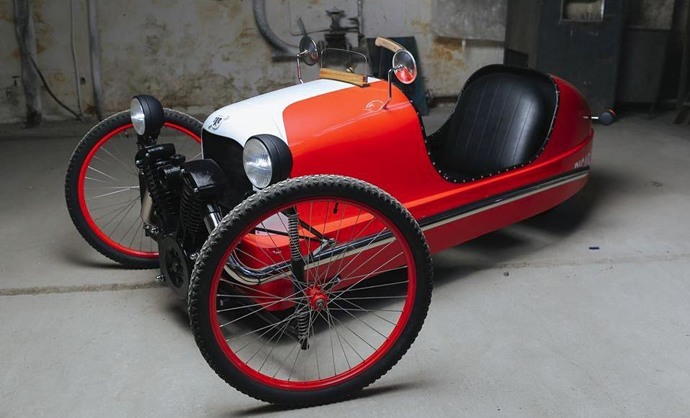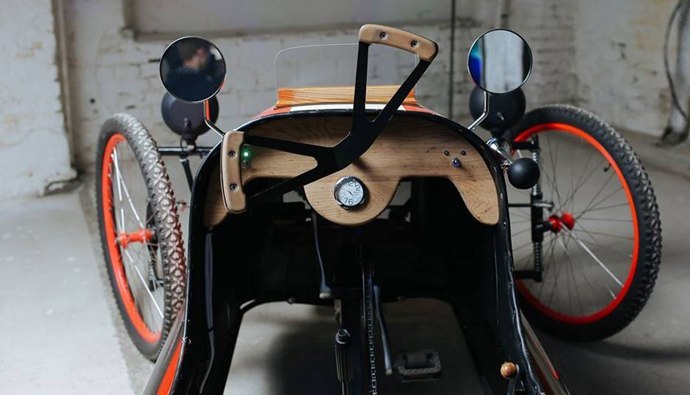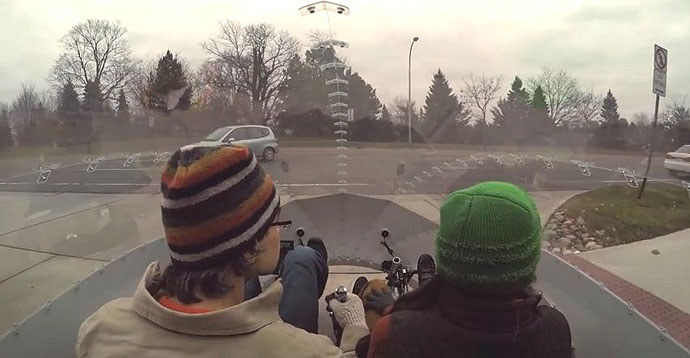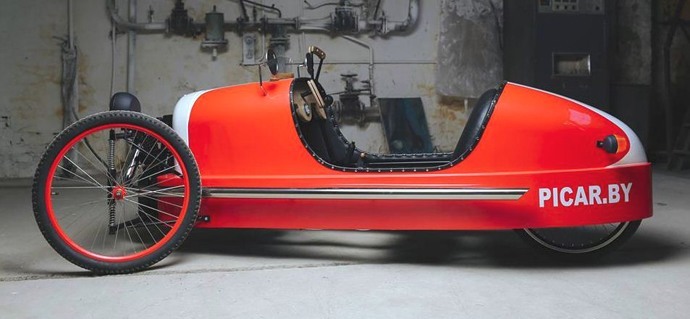Most of us rode tricycles when we were kids, but these humble vehicles could dramatically improve the way we travel today as adults.
If we valued clean air, safe streets, health and vitality above effortless personal mobility – or if petrol became unaffordable – most would turn to bicycles and human-powered vehicles. Human-powered vehicles (HPVs) make the most of lightweight materials, a recumbent seating position and sleek bodywork to achieve speeds of up to 80 mph, but their focussed design and distinctive appearance means only the earliest of early adopters rides them.
The fastest and lightest HPVs might look like futuristic pods, but a new breed of pedal-powered trike has an altogether more stylish and accessible appearance.

Picar has re-imagined the famous motorised trike built by Morgan for the last century as an electrically assisted trike. The charming trike makes the ideal commuter. Fitted with 27-inch mountain bike wheels and boosted by a 1 kW electric motor, the retro-inspired three-wheeler can achieve speeds of up to 40 km/h when needed.

Zeppelin trike
The Zeppelin by The Future People is a human electric hybrid vehicle. It is powered by two riders aided by a 750 w electric rear motor and cruises at 25 mph on flat ground. Built from aluminium and polycarbonate it weighs just 122 kg and has a 30 km electric range. In America, the Zeppelin meets the legal definition of a bicycle in many states, making it street legal with no license, registration, or insurance required.

The Future Cycles project was born from a realisation that current transport infrastructure would outlive the petrol-powered vehicles that currently use it; begging the question: “What transportation alternatives could replace these vehicles that would deal with shifting energy availability and still provide the kind of independent travel that our infrastructure requires?”
Any alternative would need to be much lighter in weight, highly efficient, use only local sustainable energy, and be inexpensive to own and maintain. The Zeppelin trike combines weather protection and carrying capacity of a car with the efficiency of a bike. The goal was to create a car-like experience in a vehicle that is human powered and legally defined as a bicycle.

Light and airy – the view from the Zeppelin cabin
Through the design, fabrication, and demonstration of these vehicles, The Future People hope to challenge us to consider the use of human energy and the resource of time as alternative options to fossil fuels.
For more about the Zeppelin trike visit www.thefuturepeople.us
What is a safe car?
Most people would not consider using a vehicle like the Zeppelin on the roads because of fears over safety, but what exactly constitutes a ‘safe’ car? There is a perception that large, heavy cars such as 4X4s are safe, but any added protection they offer their occupants is very much at the expense of any other road user with which they collide. Human-powered vehicles are designed to operate in urban areas at low speeds. This makes them less of a risk to pedestrians and less damaging to the road surface. Furthermore, they are economical and near-silent. If the 20mph limits in urban areas were respected, HPV tricycles such as the Zeppelin would come into their own.
If we can recognise human-powered vehicles as a sustainable and safe alternative to cars for local trips, then tricycles like the pedal-powered Morgan lookalike and Zeppelin can help transform our towns and cities for the better.
The ethical choice
The ETA was established in 1990 as an ethical provider of green, reliable travel services. Over 30 years on, we continue to offer cycle insurance , breakdown cover and mobility scooter insurance while putting concern for the environment at the heart of all we do.
The Good Shopping Guide judges us to be the UK’s most ethical provider.


Lawrence Rhodes
Your bike could benefit from solar panels. They would also keep you cooler. Direct sunlight on your heads even with the bottom open can be very hot. The Plexiglas above your head is no good unless you like looking at clouds. http://www.dailymail.co.uk/sciencetech/article-2767806/Meet-Stella-solar-powered-car-drives-500-miles-SINGLE-charge-warns-traffic-lights-change.html You may get some ideas from this vehicle.